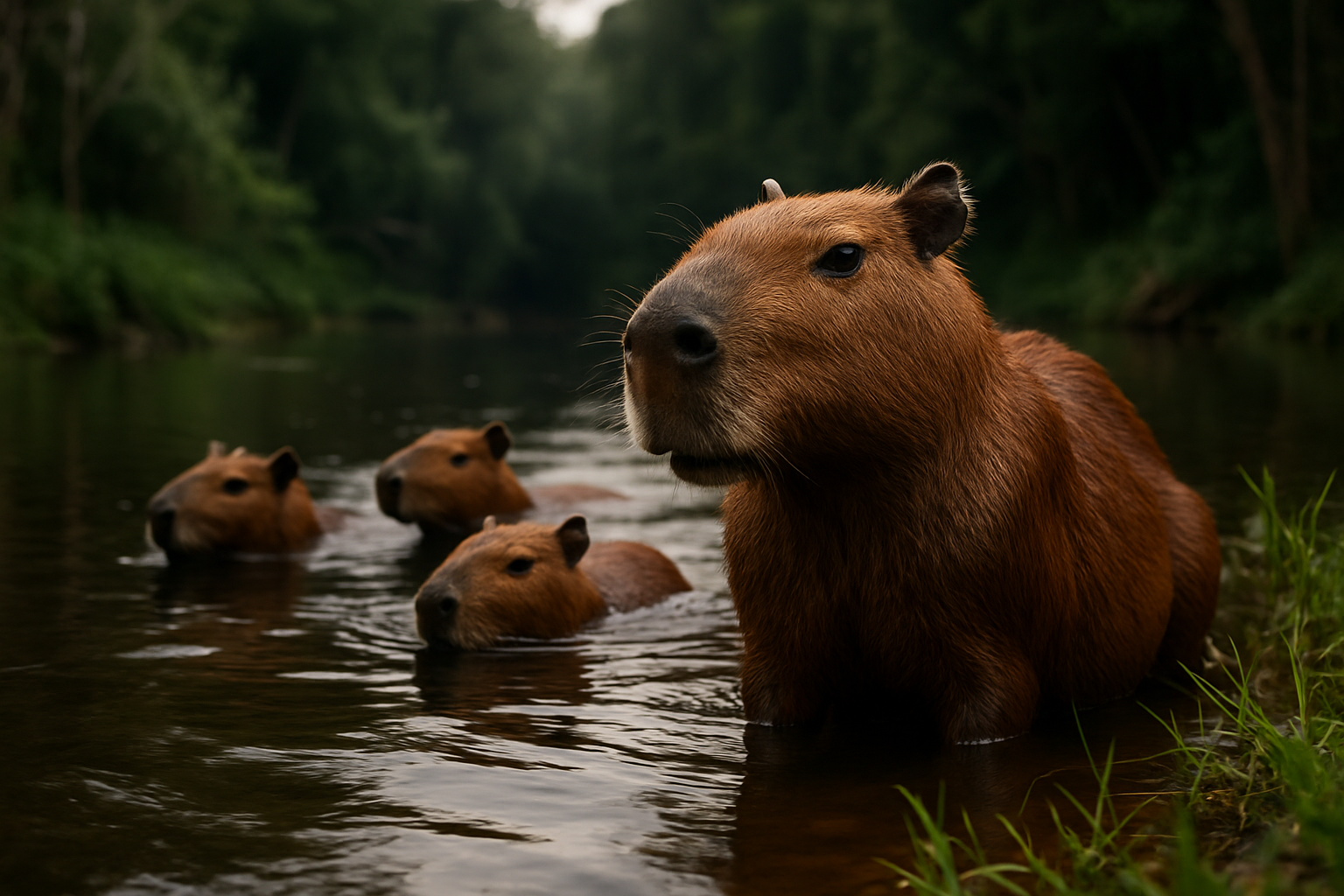The Hidden World of Capybara Social Dynamics
In the lush wetlands and dense forests of South America, a remarkable rodent reigns supreme. The capybara, the world's largest living rodent, captivates animal enthusiasts with its gentle nature and intriguing social behavior. This article delves into the fascinating world of capybara social dynamics, exploring their complex relationships, communication methods, and unique adaptations that have allowed these gregarious creatures to thrive in their diverse habitats.

The Evolution of Capybara Social Structures
Capybaras have evolved to live in highly organized social groups, a trait that sets them apart from many other rodent species. These groups, known as herds, can consist of anywhere from 10 to 40 individuals, with some larger aggregations reported in ideal habitats. This social evolution is believed to have occurred as a response to predation pressures and the need for efficient resource utilization in their semi-aquatic environments.
The development of their social structure has been a gradual process, shaped by millions of years of adaptation to their wetland habitats. Fossil evidence suggests that the ancestors of modern capybaras began to exhibit social behaviors as far back as the Miocene epoch, approximately 5-23 million years ago. This long evolutionary history has resulted in a finely tuned social system that balances individual needs with group cohesion.
Hierarchy and Leadership in Capybara Herds
At the heart of capybara social dynamics lies a well-defined hierarchical structure. Each herd is typically led by a dominant male, who plays a crucial role in maintaining group cohesion and defending territory. This alpha male is usually the largest and most experienced member of the group, earning his position through displays of strength and strategic alliances.
Beneath the alpha male, a complex web of relationships exists among adult females, subordinate males, and juveniles. Female capybaras often form strong bonds with one another, engaging in cooperative behaviors such as alloparental care, where females assist in raising each other’s young. This system of shared parenting contributes to the overall success and survival of the herd.
Communication: The Glue of Capybara Society
Capybaras have developed a sophisticated system of communication to navigate their complex social world. Their vocal repertoire includes a wide range of sounds, from high-pitched whistles to low barks and even purrs. These vocalizations serve various purposes, from alerting the group to potential dangers to expressing contentment during social grooming sessions.
In addition to vocal communication, capybaras rely heavily on scent marking to convey information. They possess specialized scent glands, known as morillo glands, located on their snouts. By rubbing these glands on objects or other capybaras, they leave behind chemical signals that convey important information about identity, territory, and reproductive status.
The Role of Play in Capybara Social Development
Play behavior is a crucial aspect of capybara social life, particularly for young individuals. Juvenile capybaras engage in a variety of playful activities, including chasing, wrestling, and mock fighting. These seemingly frivolous interactions serve important developmental purposes, helping young capybaras hone their motor skills, establish social bonds, and learn the rules of capybara society.
Interestingly, play behavior is not limited to juveniles. Adult capybaras have been observed engaging in playful activities, particularly during periods of relaxation in water. This continued play into adulthood is thought to contribute to the maintenance of social bonds and the overall well-being of the herd.
Capybara Societies: Lessons in Cooperation
The social dynamics of capybara herds offer valuable insights into the evolution of cooperative behavior in animals. Unlike many other rodent species, capybaras exhibit a high degree of social tolerance and cooperation, even among unrelated individuals. This cooperative spirit is evident in their shared vigilance against predators, communal nursing of young, and collective defense of territory.
Recent studies have shown that capybaras are capable of recognizing individual faces and voices within their social group, a cognitive ability previously thought to be limited to more “advanced” mammals. This capacity for individual recognition likely plays a crucial role in maintaining the complex social relationships observed within capybara herds.
Conservation Implications of Capybara Social Behavior
Understanding the intricacies of capybara social dynamics has important implications for conservation efforts. As human activities continue to encroach on capybara habitats, preserving the integrity of their social structures becomes increasingly critical. Conservation strategies must take into account the need for sufficient space and resources to support healthy capybara populations and their complex social interactions.
Furthermore, the study of capybara societies provides valuable insights into the evolution of social behavior in mammals. By comparing capybara social structures to those of other highly social species, researchers can gain a deeper understanding of the factors that drive the development of complex animal societies.
In conclusion, the hidden world of capybara social dynamics offers a fascinating glimpse into the complexities of animal societies. From their hierarchical structure to their sophisticated communication systems, capybaras demonstrate a level of social sophistication that challenges our perceptions of rodent intelligence and behavior. As we continue to unravel the mysteries of these remarkable creatures, we gain not only a deeper appreciation for the diversity of animal social systems but also valuable insights that can inform conservation efforts and our understanding of the evolution of social behavior in the animal kingdom.





